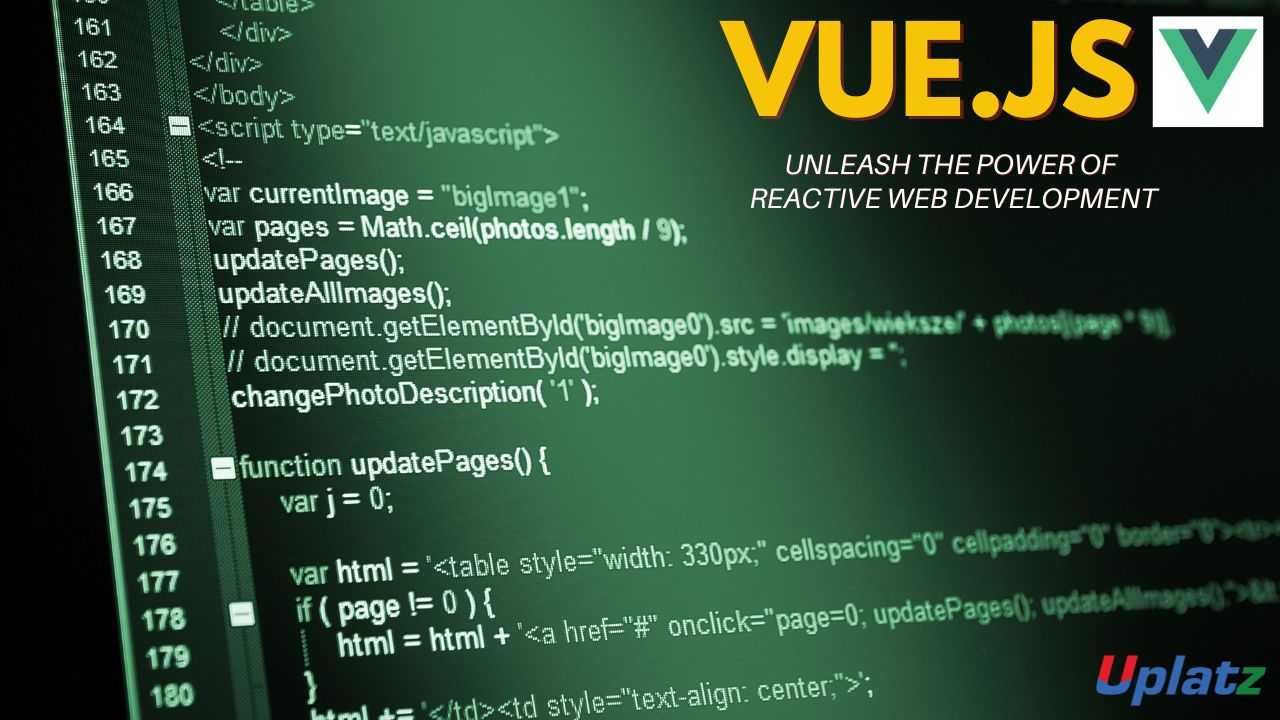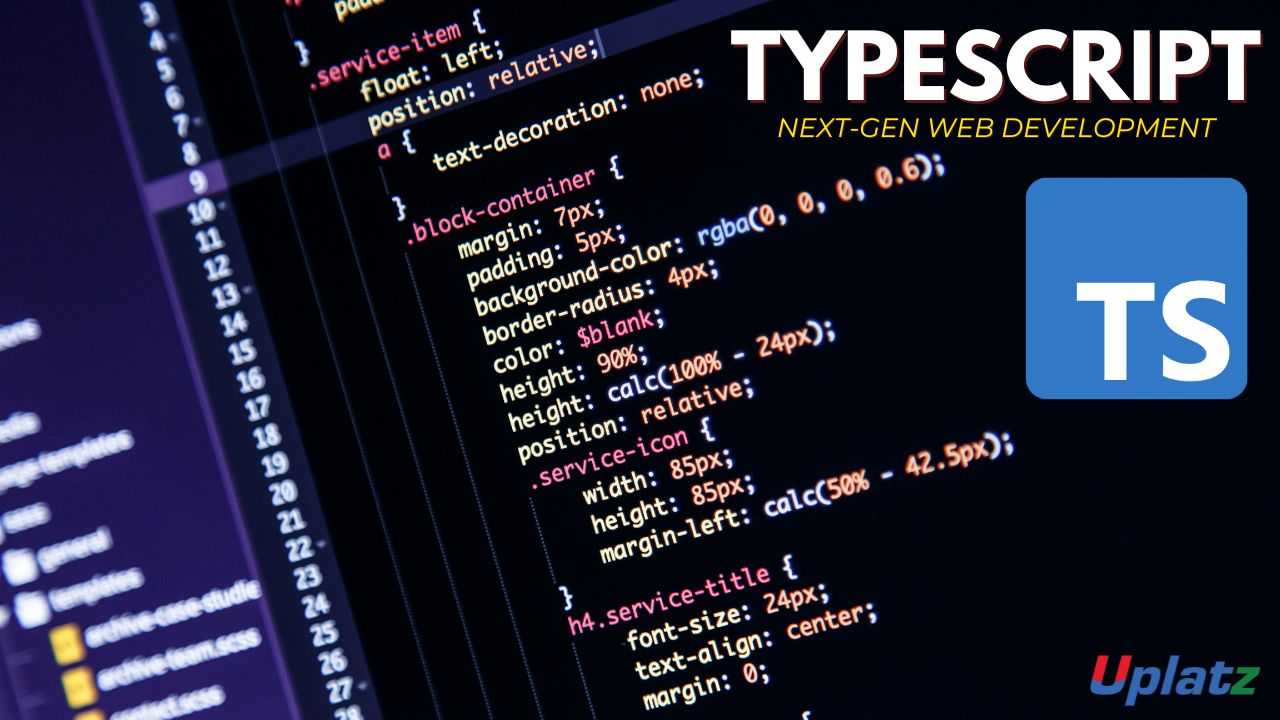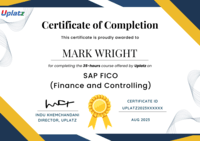JavaScript Programming (Advanced)
Master Asynchronous Patterns, Performance Optimization, and Framework-Independent Advanced JavaScript Techniques. Become a JavaScript Programmer.Preview JavaScript Programming (Advanced) course
Price Match Guarantee Full Lifetime Access Access on any Device Technical Support Secure Checkout Course Completion Certificate 90% Started a new career
BUY THIS COURSE (
90% Started a new career
BUY THIS COURSE (GBP 12 GBP 29 )-
 93% Got a pay increase and promotion
93% Got a pay increase and promotion
Students also bought -
-

- Vue.js
- 21 Hours
- GBP 12
- 2667 Learners
-

- Next.js
- 6 Hours
- GBP 12
- 876 Learners
-

- TypeScript
- 13 Hours
- GBP 12
- 4569 Learners

JavaScript Programming (Advanced) – Self-Paced Online Course
Unlock the full potential of modern JavaScript with this advanced, self-paced online course specifically designed for developers aiming to deepen their understanding of JavaScript's inner workings. This course is a comprehensive resource for anyone looking to move beyond intermediate knowledge and gain a command of high-level JavaScript programming. It is ideal for frontend and full-stack developers who want to write better, faster, and more secure code, without relying on frameworks.
As JavaScript has grown from a simple scripting language to the backbone of modern web development, the need for deeper understanding has never been more critical. This course addresses that need by focusing on the mechanics that power advanced JavaScript—moving past just using frameworks or libraries and diving into what makes JavaScript tick. Students will explore advanced asynchronous programming patterns including Promises, callbacks, and async/await. You’ll learn not only how to use them, but how JavaScript’s concurrency model, including the event loop and task queues, enables non-blocking code execution—key for performance-critical applications.
In addition to asynchronous programming, the course explores crucial concepts such as closures, lexical scope, context (this), and memory management. These concepts are foundational to writing modular, secure, and reusable code. You will also examine how JavaScript handles garbage collection and how to prevent memory leaks—common problems in long-running applications or SPAs. From optimizing runtime performance to creating cleaner abstractions, these lessons prepare you for building enterprise-grade applications with JavaScript alone.
Another core focus of the course is functional programming, which is increasingly relevant in modern web development. Learners will gain a deep understanding of concepts like immutability, higher-order functions, composition, and currying. You’ll see how these paradigms can help you write cleaner, testable, and scalable code. By working through real-world coding scenarios, you will build confidence in applying these techniques in practical development tasks.
The course also covers the latest ECMAScript (ES6+) features, including destructuring, arrow functions, modules, default parameters, template literals, and spread/rest operators. These features are now an industry standard and are critical for writing clean and efficient code. You'll also work with modern browser APIs, understand advanced event handling mechanisms like event delegation, and explore how to integrate these APIs into robust front-end applications. Special emphasis is placed on writing secure, framework-independent JavaScript that can be reused across projects and tech stacks.
Throughout the course, learning is project-based and hands-on. Each concept is reinforced with exercises, real-world scenarios, and projects that provide learners with a chance to immediately apply what they’ve learned. You’ll explore module bundling, build your own utility libraries, and practice debugging JavaScript using Chrome DevTools and performance profiling tools. These practical experiences help build the confidence and skills necessary for solving real-world development problems.
Upon successful completion, learners will receive a Course Completion Certificate from Uplatz, serving as formal recognition of their advanced skills in JavaScript. This certificate demonstrates mastery of asynchronous code patterns, closures, memory handling, ES6+ syntax, and performance tuning—all critical skills for senior developers and technical leaders. It also signals your ability to work independently of frameworks, which is increasingly valued in complex software environments where framework flexibility is essential.
Whether your goal is to transition into a senior engineering role, specialize as a JavaScript architect, or become a full-stack developer with deep JavaScript knowledge, this course equips you with the necessary tools. By mastering the fundamentals and advanced behaviors of JavaScript, you position yourself as a candidate capable of contributing to performance-optimized and scalable applications. Moreover, this course helps prepare you for technical interviews, offering insight into commonly asked questions and how to approach them using real technical reasoning.
You’ll learn how to prevent memory leaks, manage closures responsibly, debug complex codebases, and use advanced features of JavaScript to write clean, maintainable code. As you complete exercises on topics such as module architecture and browser API integration, you build a portfolio of knowledge and work that demonstrates your capabilities to employers and clients. The skills gained here are transferable across projects and job roles, making this course an investment in long-term career growth.
This course is not just a set of tutorials; it's a pathway to mastery. Designed with flexibility in mind, it offers lifetime access to all video lectures, assignments, downloadable materials, and community support. You can revisit lessons at any time, stay up to date as JavaScript evolves, and continue building your skills at your own pace. And while the course does not require prior knowledge of frameworks, the understanding you gain will make it easier to adopt any framework in the future with confidence and clarity.
Course/Topic 1 - Course access through Google Drive
-
Google Drive
-
Google Drive
By the end of this course, learners will be able to:
-
Understand advanced JavaScript features and the internal workings of JavaScript engines.
-
Apply asynchronous patterns using callbacks, Promises, and async/await.
-
Master functional programming concepts such as currying, composition, and immutability.
-
Utilize closures, scopes, and context effectively for modular code.
-
Handle memory leaks, garbage collection, and optimize runtime performance.
-
Use ES6+ features including destructuring, spread/rest operators, and modules.
-
Leverage browser APIs, event delegation, and advanced event handling techniques.
-
Debug JavaScript using DevTools and profiling tools like Chrome’s performance panel.
-
Develop secure, performant, and scalable front-end codebases.
-
Build framework-independent libraries and utilities using vanilla JavaScript.
JavaScript Programming (advanced) - Course Syllabus
Section 1: Advanced Functions and Functional Programming
- Higher-Order Functions
Explore what higher-order functions are and their applications. - Using map(), filter(), and reduce() in Higher-Order Functions
Learn how to use these powerful methods in functional programming with examples. - Understanding Closures
Understand JavaScript closures and their mechanics with examples. - Practical Applications of JavaScript Closures
Discover real-world scenarios where closures are useful. - JavaScript Function Currying
Dive into currying and how it simplifies function handling. - Functional Programming and Its Benefits
Understand the principles of functional programming and its advantages. - Combining Functions for Cleaner Code
Learn techniques for composing functions to improve code readability. - Immutability and Pure Functions in JavaScript
Explore how immutability and pure functions enhance JavaScript code. - Using Libraries for Functional Programming
Discover libraries like Lodash and Ramda for advanced functional programming.
Section 2: Recursion and Algorithm Optimization
- Understanding and Implementing Recursive Functions
Learn how recursion works with factorial and Fibonacci examples. - Tail Recursion Optimization
Discover the concept of tail recursion and how to optimize recursive calls. - Sorting Algorithms in JavaScript - Quicksort and Mergesort
Implement and understand sorting algorithms like Quicksort and Mergesort. - Searching Algorithms and Optimization Techniques
Explore searching techniques like binary search and optimizations.
Section 3: Object-Oriented Programming
- JavaScript’s Prototype-Based Inheritance
Understand prototype inheritance and the ES6 class syntax. - Using Class Syntax for OOP
Learn modern JavaScript class syntax for object-oriented programming. - Creating Subclasses and Extending Existing Classes
Explore how to create subclasses and extend classes effectively. - Using the super Keyword Effectively
Discover how the super keyword is used in JavaScript inheritance. - Defining Private Fields and Methods in ES6+
Understand private fields and methods for encapsulation in classes. - Reusing Code Across Classes Using Mixins
Learn how mixins can help you reuse code across multiple classes.
Section 4: Asynchronous JavaScript
- Understanding Promises
Explore promises and their role in asynchronous programming. - Chaining Promises and Managing Complex Async Workflows
Learn how to chain promises to handle complex workflows. - Error Handling with Promises
Best practices for managing errors in promise chains. - Writing Cleaner Asynchronous Code
Discover how to write elegant asynchronous code using async/await. - Handling Errors in Async/Await
Manage async/await errors using try...catch effectively. - Creating and Using Async Iterators
Work with data streams using async iterators. - Differences Between Concurrency and Parallelism
Understand concurrency and parallelism concepts in JavaScript. - How Asynchronous Code is Handled in JavaScript
Learn about event loops, microtasks, and macrotasks. - Handling Errors Using try...catch
Master error-handling strategies using try...catch. - Tutorial on Fetch API and Axios Library
Learn to fetch data with Fetch API and Axios. - RESTful API Integration with JavaScript
Integrate REST APIs into JavaScript applications.
Section 5: Debugging and Performance Optimization
- Using Browser Developer Tools Effectively
Learn to debug and monitor performance with browser tools. - Debugging Using Breakpoints and Call Stacks
Understand debugging techniques like breakpoints and call stacks. - Input Validation and Code Safety Checks
Validate inputs and ensure safe, secure JavaScript code. - Optimizing Performance with Large Datasets
Handle and optimize large datasets efficiently. - Memory Management and Leaks
Learn about memory leaks and how to prevent them. - Optimizing Loops and Operations
Discover best practices for optimizing loops and repetitive tasks. - Lazy Loading and Code Splitting
Learn how lazy loading and code splitting improve performance.
Section 6: Advanced JavaScript Features
- JavaScript Sets and Maps
Explore Sets and Maps for efficient data storage and retrieval. - WeakMap and WeakSet
Understand WeakMap and WeakSet and their use cases. - Destructuring and Rest-Spread Operators
Simplify code using destructuring and spread/rest operators. - Template Literals and Tagged Templates
Learn advanced string manipulation with template literals and tagged templates. - JavaScript Modules (ES6)
Understand how to use ES6 modules for modular development. - JavaScript Iterators and Generators
Implement and use iterators and generators effectively. - JavaScript Proxy and Reflect
Master Proxy and Reflect for meta-programming tasks. - Techniques for Manipulating Nested Structures
Learn advanced techniques for handling nested objects and arrays.
Section 7: Practical Applications and Projects
- Building Reusable Components Using JavaScript
Create reusable components for frameworks like React and Vue. - Handling CORS and JSON in JavaScript
Learn best practices for working with CORS and JSON data. - Expense Tracker App
Build an expense tracker app using advanced JavaScript concepts. - Advanced JavaScript Capstone Project
Work on a project to consolidate your advanced JavaScript knowledge.
Section 8: Patterns, Testing, and Standards
- Declarative vs Imperative Programming
Understand these paradigms with examples. - Design Patterns in JavaScript
Learn and implement common design patterns. - Coding Standards and Linting in JavaScript
Maintain clean and consistent code using ESLint and similar tools. - Testing JavaScript Code with Jest and Mocha
Write and test JavaScript applications with Jest and Mocha.
Section 9: Promises, Error Handling, Memory Optimization
- Understanding Promise
Deep dive into JavaScript promises. - Custom Error Objects and Extending the Error Class
Learn to create and extend custom error objects. - Error Propagation and Re-Throwing Errors
Understand how to propagate and rethrow errors effectively. - Code Profiling and Benchmarking with JavaScript
Analyze and benchmark JavaScript code performance. - Handling Errors in Nested Promises
Manage errors in complex promise chains effectively. - Memory Optimization Techniques
Discover memory optimization techniques in JavaScript.
Section 10: Interview Preparation
- Advanced JavaScript Interview Questions
Practice answering interview questions on advanced JavaScript topics.
Upon successful completion of the JavaScript Programming (Advanced) course, learners will receive a Course Completion Certificate from Uplatz, verifying their mastery of high-level JavaScript programming skills.
This certification demonstrates your proficiency in modern JavaScript concepts, including asynchronous programming, closures, functional patterns, and memory optimization. It affirms your ability to write clean, efficient, and scalable code independent of frameworks—an essential skill for any senior frontend or full-stack developer.
You will have proven your capability to build and debug real-world web applications using ES6+ syntax, understand the JavaScript event loop and execution contexts, manage modular architecture, and integrate with browser APIs securely and efficiently.
The certificate signals to employers and teams that you’re not only technically sound but also prepared to take on performance-critical, scalable development projects. It enhances your portfolio and boosts your credibility when applying for roles such as JavaScript Engineer, Technical Lead, or Web Performance Architect.
In a fast-evolving web ecosystem, this certification sets you apart by highlighting your commitment to understanding JavaScript beyond surface-level usage. Add it to your resume, GitHub, and LinkedIn profile to showcase your advanced skills and gain a competitive edge in the job market.
Advanced JavaScript developers are in high demand across tech companies, startups, SaaS firms, and enterprise-level web platforms. Mastering JavaScript at an advanced level opens up career opportunities in both frontend and full-stack domains.
Career roles include:
-
Senior JavaScript Developer
-
JavaScript Architect
-
Front-End Performance Engineer
-
JavaScript Security Specialist
-
Full Stack Engineer (JavaScript)
-
Technical Lead – Web Development
-
UI/UX Developer with JavaScript Expertise
Whether you’re aiming for leadership roles or framework-agnostic JavaScript mastery, this course gives you the tools to elevate your career trajectory.
- What is the difference between synchronous and asynchronous JavaScript?
Synchronous code blocks execution until it finishes. Asynchronous code executes in the background using callbacks, Promises, or async/await, enabling non-blocking behavior. - How does the event loop work in JavaScript?
It processes the call stack and handles asynchronous tasks from the callback queue, enabling non-blocking execution of code. - Explain closures and how they are used in JavaScript.
A closure gives a function access to its lexical scope even after the outer function has returned. It is useful for creating private variables and function factories. - What is the difference between call, apply, and bind?
All set the this context. call and apply invoke functions immediately, with apply accepting an array of arguments. bind returns a new function with bound context. - What are the key features introduced in ES6?
Arrow functions, template literals, let and const, destructuring, default parameters, classes, modules, and Promises. - What are JavaScript modules and why are they useful?
Modules encapsulate code for reusability and maintainability. They can be imported/exported using import/export in ES6. - What is debouncing and throttling?
Debouncing delays function execution until after a pause; throttling limits the number of times a function executes in a time frame—both are used to improve performance. - How do you prevent memory leaks in JavaScript?
By clearing intervals/timeouts, removing unused event listeners, avoiding global variables, and dereferencing objects in closures. - What is the difference between deep copy and shallow copy?
A shallow copy duplicates only the top-level object. A deep copy recursively clones nested objects, preventing shared references. - How would you debug performance issues in JavaScript?
Using Chrome DevTools’ Performance tab, memory profiling, and logging execution time with console.time() and console.timeEnd().









